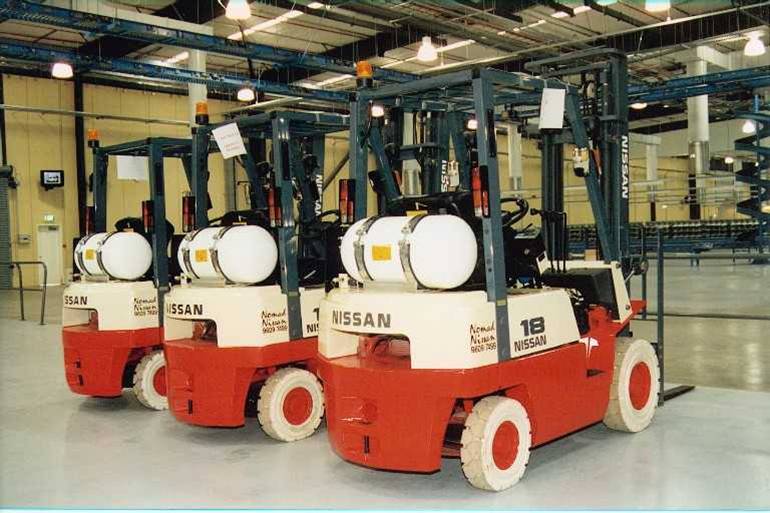A majority of forklifts equipped with internal combustion engines run on gasoline, diesel or liquid propane gas (LPG). Some forklifts are equipped to run on compressed natural gas (CNG). Which gas is better for your forklift fleet? There are a few factors to take into account:
Availability- LPG is more widely available than CNG. LPG is in higher demand since it is used for other purposes, such as gas grills, and filling stations are common. Filling stations for CNG are sparse in some areas of the country and can be difficult to find. Often warehouses need to set their own CNG refueling stations.
Cost- Since LPG is in higher demand, it is more expensive than CNG. The cost of LPG can be upwards of 50% more than CNG. CNG prices can also widely vary depending on its availability in certain parts of the country. For example, the number of CNG filling stations in California greatly outnumbers the ones in Florida. LPG is commonly found in all areas of the country and therefore prices are more consistent.
Environment- CNG has considerably lower emission levels than LPG. Propane produces about 1.40 grams per mile of carbon monoxide, reactive hydrocarbon, while natural gas produces only .01 grams per mile. Forklifts that run on CNG are also almost 50% quieter, meaning less noise pollution and a safer operating environment.
From a cost and convenience factor, liquid propane gas is the best option. That does not mean you can’t be environmentally conscious. Proper use and lifecycle management of your forklift fleet is vital to keeping your costs low and creating value through efficiency. A plan can be developed that will make your forklift fleet run more efficiently, thus producing lower emissions. By having your entire fleet managed through every step of the lifecycle, you can save your business tens of thousands of dollars while lessening your carbon footprint.

